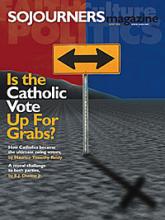Last March, during the final weeks of Lent, as the wind howled over the snow-strewn city streets, a group of close friends gathered in our living room to pray for healing. It was both a most biblical and a revolutionary step. It was also terrifying.
We gathered to pray for the lifting of my covenant partner’s depression. It was, in many ways, a move of desperation. The disease had shadowed his brilliant spirit and mind for four years. Certainly, in that time, we had prayed—constantly. We had also tried most of what the medical world had to offer—extensive counseling, therapies, retreats, medications, and more medications. Still the dark, anxious thoughts dogged his spirit and shadowed the life of our family.
Some family members had urged us to travel to sites where charismatic preachers and healers worked miracles of healing—Toronto (site of the Toronto Blessing), a charismatic healer’s ministry for family healing in Florida, a small church on the West Coast. We never made those trips. Though I firmly believe that mysterious, unexplained healings do occur, in those places and elsewhere, something in me rejected the idea that certain people or places have an “edge” on healing. Another part of me was skeptical of the mindset that complex illnesses such as mental health or addiction and psychological damage are resolved after one prayer or conversion experience.
We often ask others to “pray for us.” It is a different, more vulnerable, and more terrifying level of prayer to intentionally gather people to pray with the expectation of healing for a specific condition. (Particularly if one’s medical illness carries a stigma—and depression is such an illness.) If the prayer fails, that failure can become an even more significant defeat to carry in your body along with the unhealed illness.
Read the Full Article

